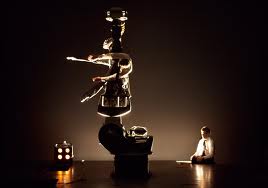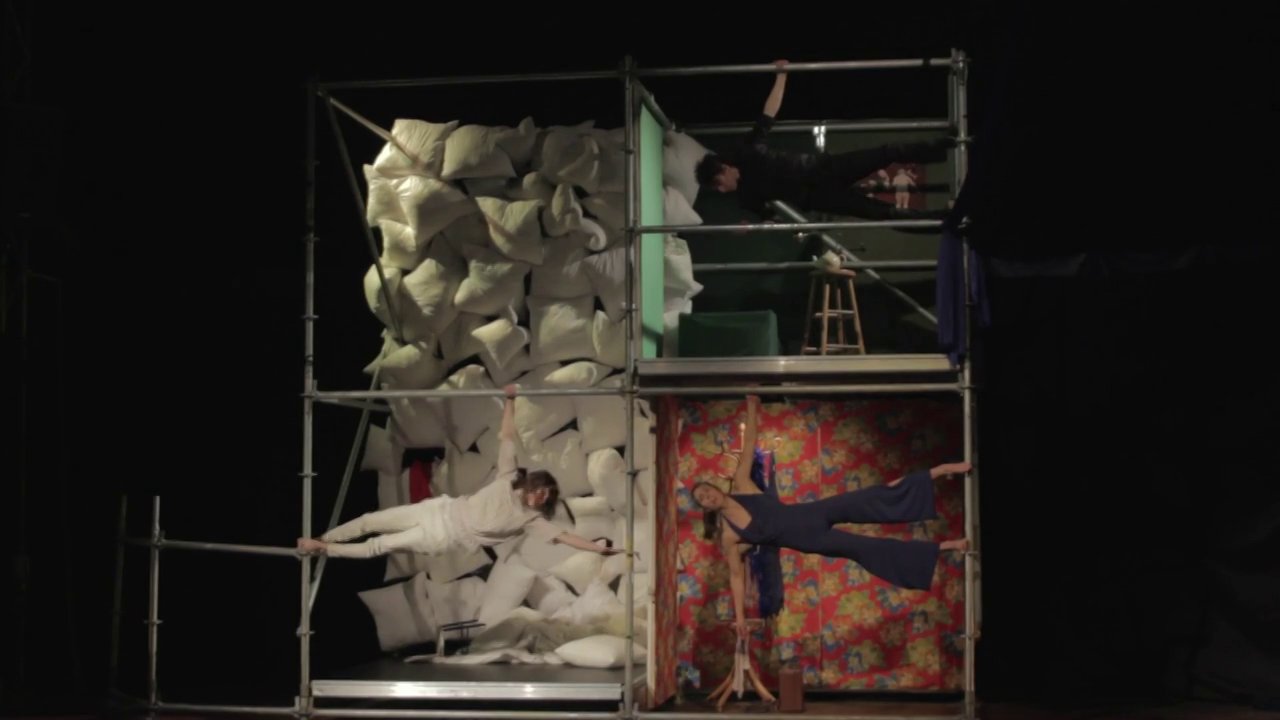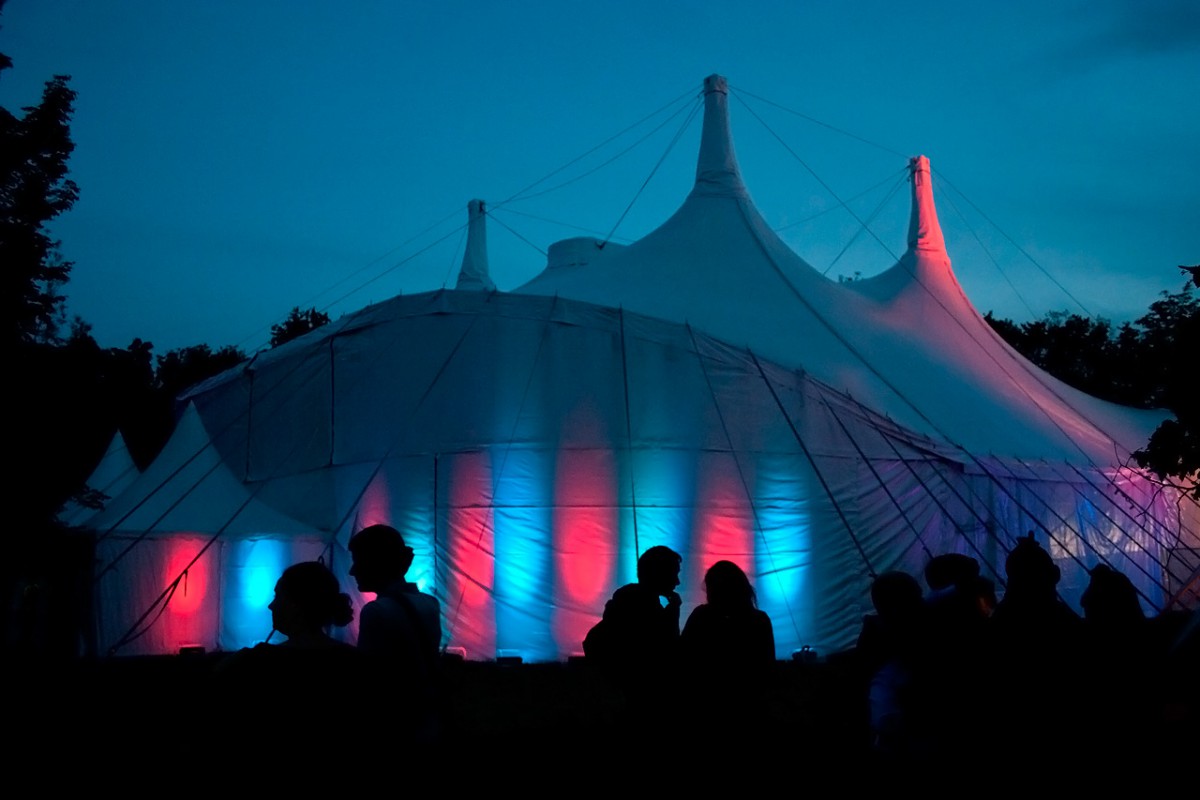*Originally written for Unpack The Arts following residency at Humorologie festival
Circus, like language, is never fixed. It evolves with society, adapting to changing needs but retaining echoes of its previous life. 50 years ago, who could have imagined that ‘text’ would become a verb? 50 years ago, who would have imagined that circus could overcome its declining popularity to re-emerge as an art-form taught in prestigious schools around the globe?

Despite the dominance in public perception of iconic tenting circuses such as the Ringling Bros. and Barnum & Bailey company – who, in the last century, controlled a syndicate of the 11 largest touring circuses in North America – there has been a progressive move away from this classical model amongst circus performers since the 1960s.
As the circus experience shifts further and further from popular pre-conceptions, the common language by which we used to describe it is no longer adequate; during our time at Humorologie, this issue was apparent not only in the way we each received the work, but in discussions with producers and artists themselves.
As the circus re-invents itself, so must we re-invent our frames of reference, to come to an understanding of what ‘circus’ means today. An essence du cirque.
The proliferation of the term ‘cirque’ in modern company’s names and show titles is indicative of the international flavour circus has always presented (as well as the French lead in the move away from classically typical circus arts, and association with the commercial giant Cirque Du Soleil). Performers from many nations have always performed together under the circus banner, travelling to audiences around the world; communications have always had to bridge linguistic gaps in understanding. Before the age of the television or the internet, one of the key attractions a travelling circus could offer was the opportunity to see something ‘other’, and to broaden an audience’s world.

On Company Pol & Freddy’s open-air stage, Cirque Democratique de la Belgique (co-produced by the festival) gave me a glimpse into the alien world of Belgian politics, tempered by my familiarity with the manipulations of supposedly democratic systems worldwide. Although Bram Dobbelaere, one of the company’s founders, admits the concept of a ‘political circus’ is not imbedded into the Flemish language as it is with British and American English, the presentation is a wry reflection of these same concerns over misdirection and media manipulation in recent elections. The show is presented in Flemish, and demands the audience vote with red or yellow cards to determine what they will see next. Perhaps, with my limited Flemish, I was paying more attention to the mechanics of the ‘votes’ than other members of the native audience, but it was quickly apparent that the show was going to proceed along a pre-determined course, and the supposed element of choice for the audience was largely a fiction. Whilst this could have been an annoyingly risk-averse strategy, it actually serves the deeper function of high-lighting wide-spread political tactics – and human nature – in an engaging and thought-provoking way. The inclusion of juggling skills provides further metaphor and, though this is a text heavy show, the communication comes primarily through a shared language of political presentation and democratic processes, rather than a comprehensive understanding of what is being said.

This injection of external codes into the traditional presentation of skills-based performance is a way in which modern circus companies can continue to offer audiences new ways of looking at the world, in a globally digital era where little remains unseen. Circus has always been a multi-disciplinary form, but is now increasingly inter-disciplinary – integrating previously distinct elements taken from other art-forms, science, and sports into a cohesive whole.
Modern circuses are leaping artistic gaps as well as bridging linguistic ones, but the way we, as audience, receive these productions relies on our individual understanding of the codes used, and their relevance. When watching these interdisciplinary works, we are less likely to search for the new than to try and translate what we see through an existing lens; we interpret the performances as if we already know the language, when in fact, the dialect can be misleading. Belgian circus critic Liv Laveyne acknowledges that an imbalance in the forms used can make it very difficult to evaluate a performance, as the quality of a particular skill such as dance, acting or juggling, doesn’t equate to the quality of the total experience – perhaps it is bad dance, for example, but good circus. Or vice versa. She stresses the importance of questioning: ‘What aesthetics do I have to apply? Maybe I have to learn new aesthetics.’
Despite their name, and their use of object manipulation, I see Cirque Democratique de la Belgique as theatre rather than circus – reflecting my current relationship to the labels and the way I presently understand them. In this period of exploration around the art, the meaning of the word ‘circus’ has shifted away from a variety of spectacles presented in a single entertainment, and is now tied more closely to a particular vocabulary of skills. The logic often seems to follow that circus schools teach equilibristics, acrobatics, aerial skills, and object manipulation, therefore any production utilising these techniques can now call itself circus. For me, this isn’t adequate.

Image: Jordi Bover
In other productions I struggle to learn what else this new word ‘circus’ can mean. Juliana Neves directs her performers in Jump or Fall through their skills in acrobatics, contortion, and aerial silks, but it is the dance element which stands out to me in the expression of human feelings via physical movements. The charming Maiurta by Los Galindos, with its intimate ring inside a yurt rather than the classical big top, is firmly rooted in a lifetime spent working with circus, but takes a theatrical approach, using circus as a theme rather than a form. I would call it ‘clowning’. In Company 111’s Sans Objet I can see the elements of physical risk, and trust in another person, that are many people’s ‘essential ingredients’ for circus; and yet the defining characteristic for me was the animation of the central robot, forming an inventive puppetry show.
Sans Objet director Aurélien Bory actively tries to avoid definitions, and part of the contract to hire his company includes a stipulation that publicity material must not label the work. ‘It is always difficult, this question of the genre, because I don’t want to provide an answer’, he tells us. ‘It is the person who watches it that defines it.’ His performers are highly skilled acrobats, but we don’t see this in their actions onstage. It is only the show’s placement within a circus festival that defines it as such, and influences the expectations of those who come to see it.

Image: Aglaé Bory
In the wider world of performance, however, it is usually impractical to resist definition. Festival programmers, venues, funders and promoters require a language that they – and their customers – will understand, so push artists to name their work accordingly. Savvy companies recognise trends in popularity, or gaps in the market, and attach themselves to a genre to most effectively promote their work.
Cirk La Putyka from the Czech Republic explained that although their initial formation as a company was more by accident than design, when several associates from different backgrounds came together to experiment in a performance collaboration, the decision to define themselves as circus was more considered, and came as they began to develop their second show, a year on from La Putyka’s birth, in 2009.
Jiří Kohout, who has performed with the company since its inception, explains that in the Czech Republic, ‘cirkus’ popularly means animal acts, and the name ‘cirk’ provides a distinction that links their work to innovations stemming from the French system, whilst retaining an essential ‘Czech-ness’. They saw a niche in their national performance markets and stepped up to discover how to fill it, with direction from Rostislav Novák, who has long held a personal fascination with the ‘new circus’ movement and its storytelling potential.

In this year’s revival of La Putyka, we see puppetry, tango, trampolining, acrobalance, gymnastics, clowning and live music, and a strong visual aesthetic that could be called neo-classical circus, playing on the familiar imagery of popular romantic consciousness in striped socks, mismatched waistcoats, twinkly lights and faded red noses. The audience enter to find members of the cast already in place, staring into their tankards in a gently swaying tableau of late-night drinkers, whom beer has slowed to a soporific near-stop. What begins as a clear fiction of a Czech bar (the eponymous ‘putyka’), complete with drunken bar-man Kohout, is disrupted by the distribution of real beers amongst the audience, bringing us closer to their world than the opening monologue and direct address from Kohout’s character can. A blurring of reality and illusion is indicated in the surreal way life erupts amongst the on-stage customers – an alcohol-fueled distortion of normal perceptions – and, as our actual relationship to the people performing live in front of us is never again confronted, I am drawn into their fictional universe and even forget the trampolinists are well-rehearsed professionals risking far less than their apparent inebriation suggests.

La Putyka speaks a language of drunkenness that the company claim to be uniquely Czech, but translates readily to my own experiences. Whilst highly entertaining for me, however, I can recognise that without this connection – and shared theatrical codes – the surreal episodes and lack of virtuosity could seem banal.
Perhaps unsurprisingly, given the company’s solid historical connections to puppet theatre, Cirk La Putyka’s strongest talents lie in visual story-telling and, for me, their first show is a joyful theatre production that has borrowed from circus mythologies in its aesthetic toolkit. The decision to take the ‘circus’ title seems to have come as much from pragmatic business concerns as from strictly artistic ones.
‘You can call it circus and be theatre’, recognises Andrej Rády, who has performed with the company for the last two years, stepping away from a previous life as a rock singer. ‘But a show cannot exist in a vacuum. You need a tag to hang it on.’ He reiterates that a lack of definition leads to difficulty in finding places to programme the work. Currently, many circus festivals say the show is too much like acting, dance, or sports, and many theatre festivals say it is too much like circus – despite being nominated for a prestigious Total Theatre Award at Edinburgh Fringe Festival in 2011. With a twinkle in his eye, Kohout also puts the name of the company secondary to the work itself. ‘We can change it. We will see.’
A microcosm of the last 50 years in the circus industry, Cirk La Putyka have spent the last 5 forming a new language and developing a distinct style. Like the traditional circus families who came before institutionalised training, they are learning the skills to keep producing more ambitious work as they go along, and working with established circus artists like Maksim Komaro and Daniel Gulko to develop their vocabulary. Kohout reminds us that there is no circus education in the Czech Republic, and that their ‘biggest relationship is with YouTube.’ It has all been done before, but not here, and the path this company has laid with La Putyka travels with the notion of circus as the combination of many disciplines and skills in one arena, rather than following the route, laid out by circus schools in other countries, that is dictated more by a specific repertoire of techniques often used to define circus today.

One of the dangers flagged by Liv Laveyne in creating interdisciplinary circus, is a watering down of skills that can occur when combining multiple art-forms. Without being fully versant in all the various disciplines employed, often circus artists present a weak dramaturgy, for example, or theatre artists present weak technical skills, and the standards and reputation of circus slip. Circus artists are as likely to hold out-dated views about other creative fields as we are to consider their world through Barnum-tinted glasses.
With La Putyka, there was certainly a lack of virtuosity in the physical feats presented (conveniently veiled within the drunken fiction), however the company manage to embody the state of altered consciousness clearly (if not eloquently) through all their modes of presentation, from the punk-pop-folk fusion of the multi-talented musicians to the gymnastic dances of late night punters who have lost all physical inhibition. They have remained accessible, which is not easy in this new babel of circus languages.
Festival Co-ordinator Koen Allary proposes that ‘a good circus has everything in it’, and performer-turned-director Juliana Neves characterises the current era as one of investigation: ‘It’s about mixing – to not be afraid to use all kinds of languages.’ There is a danger, however, that by immersing itself too deeply into the codes of other established practises, circus will break all its rules and become another elitist art-form that can only be understood by the specially educated. Whilst a language seeks to communicate, a code remains incomprehensible to the uninitiated. If we are expected to be fluent in many different contexts to evaluate a performance adequately, are audiences who are not equally informed then inadequate?

After wrestling all weekend to come to a consensual understanding of circus as it exists today, we still find ourselves conflicted. We try to find a path to common ground through our languages of English, French, Flemish, Croatian, and our languages of dance, theatre, physics or feminism. What we come up with is a kind of pidgin, much like the way the old travelling circus language of Parlari sprang up, but spanning multiple disciplines and cultural backgrounds as well as multiple tongues.
I understand the point made by circus dramaturg Bauke Lievens, that critical circus discourse must develop alongside and from within the arts, rather than externally, so that a shared language can grow. Aurélien Bory played physically with his robot arm in directing Sans Objet so that he could share the experience with his actors, enabling them to communicate better together.
But, on the flip side of over-codification is homogenisation, and both present equal and opposite dangers to the vitality of circus performance; if we remove all ambiguity there is no room for exchange and growth. In the classic circus form, no background understanding of any kind was required to appreciate a performance, but now our audiences have grown more sophisticated in their experience of the world, fed by the ready availability of travel opportunities and televisual and internet sourced education. Audiences are diverse, and so circus must be too – the classic form began to decline in popularity because it stayed stagnant for too long.
To me, circus speaks most clearly when a performed physical action invokes a physiological response, causing my heart to race, my breath stop, or my tears flow; if my emotional response comes from an intellectual place alone, it is not circus. But, if there is no room for my intellect to explore and touch new realms of possibility, then it isn’t circus anymore either.
Perhaps the intrinsic nature of the art is its very plasticity, and resistance to conventional definition? By continuing to defy expectations, and surprise its audience through any number of forms available, circus may never be pinned down to one thing or another for more than a minute, but it will carry a legacy that can be traced, and will feed into whatever comes next. ‘There is no divorce from what came before’, as Yohann Floch (programme advisor and co-ordinator of the Circostrada network) states, ‘Only a continuing love affair.’
cir·cus [sur-kuhs]
noun, plural cir·cus·es.
Origin: 1350–1400; Middle English < Latin: circular region of the sky, oval space in which games were held, akin to (or borrowed from) Greek kírkos ring, circle




Great article! It’s a hard time for circus in the sense that it has to compete with other forms of entertainment.
I think there is also something of an identity crisis surrounding circus arts at the moment, which often creates a disparity between public expectations, artistic intentions and general reception…
True. Take No Fit State for example. Bianco was the first show that I watched from them and I thought it was amazing. But some of the aerialists I train with were wary of this frantic way of staging because No Fit State has done it in previous shows, so they were hoping for something different. Attracting new audiences while keeping old ones is a challenge.
[…] distinctive definitions to categorise her work, she does not call this piece ‘circus’, any more than Aurélien Bory did with Sans Objet; and yet, the two artists are both associated with circus arts and their development by […]
I would like to thank you for the efforts you
have put in penning this site. I am hoping to vieww the same high-grade blog posts by you in the futjre as well.
In fact, your creative writing abilities has inspired me to gett
my own, personal website now 😉
It is not my first time to go to see this website, i am visiting this site dailly and obtain good information from here every day.|
Nice post. I learn something totally new and challenging on blogs
I stumbleupon every day. It will always be interesting
to read through content from other authors and use a little something from other sites.